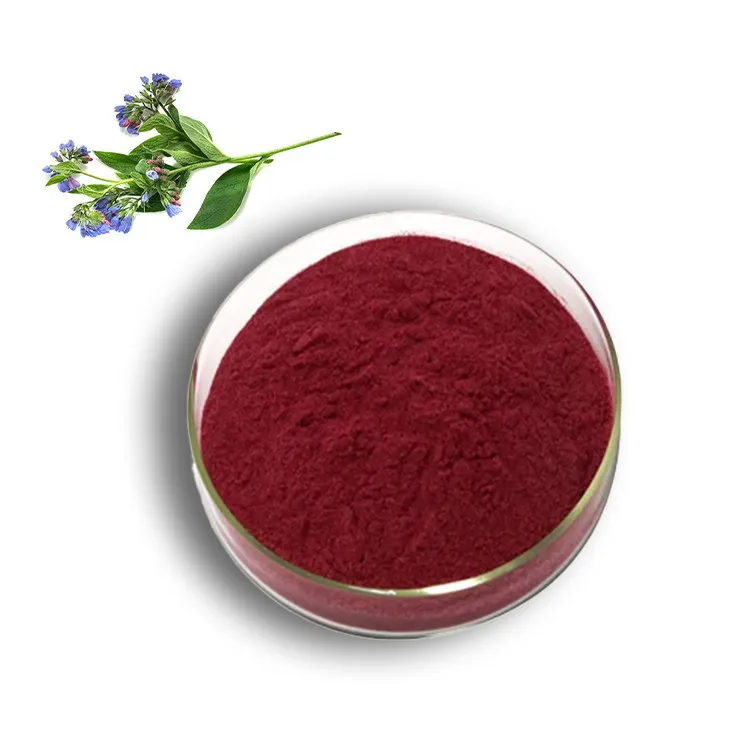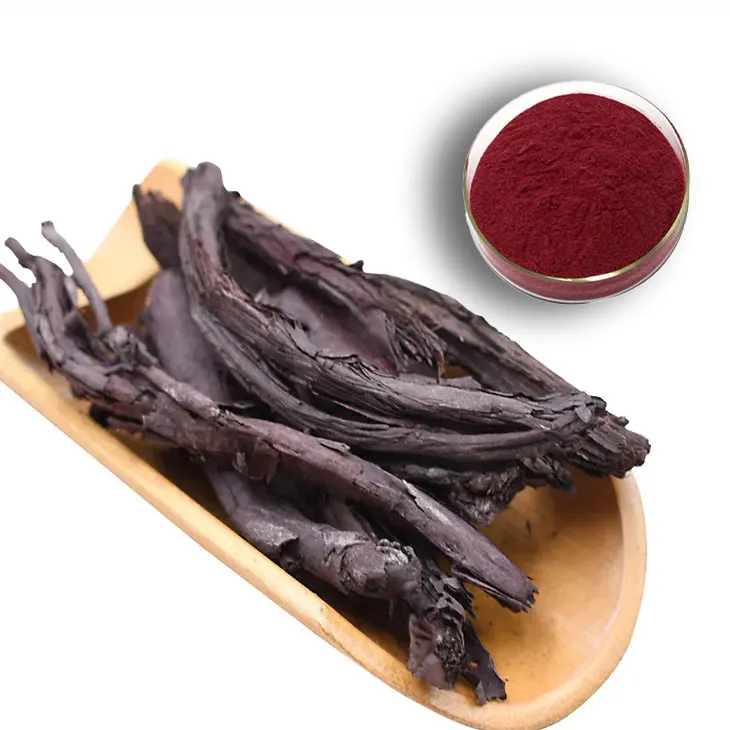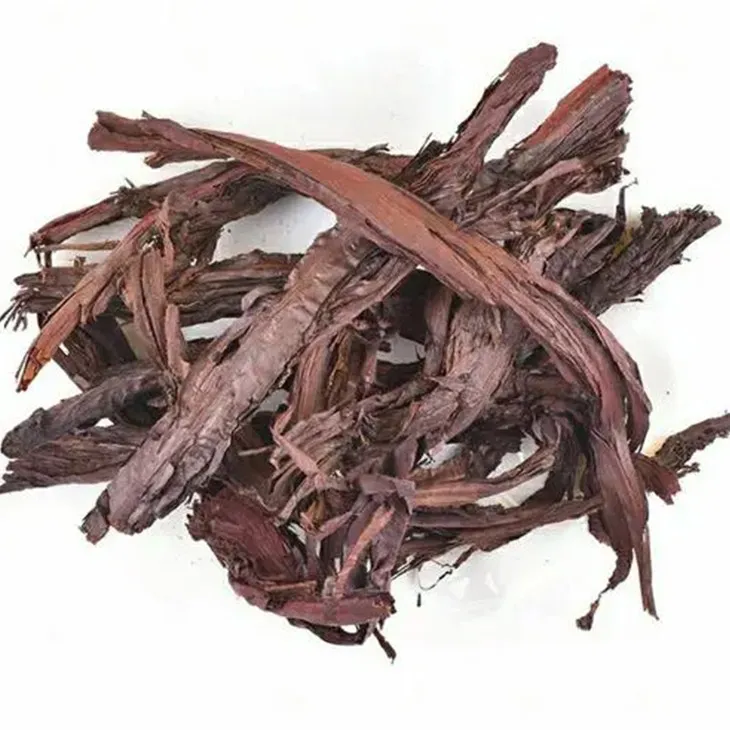- 0086-571-85302990
- sales@greenskybio.com
The best shikonin in nature.
2024-11-30

Introduction to Shikonin
Shikonin, a remarkable natural pigment, holds great significance in various fields. It is a precious gift from nature, boasting unique chemical and biological properties that have attracted the attention of researchers across different disciplines.

Shikonin in the Pharmaceutical World
Immunomodulatory Effects: Shikonin is currently under extensive investigation for its immunomodulatory effects. The immune system plays a vital role in maintaining the body's health, and shikonin's ability to modulate it is of particular interest. In the context of autoimmune diseases, where the immune system mistakenly attacks the body's own cells, shikonin may offer a potential solution. By adjusting the immune response, it could help to re - balance the system and reduce the symptoms associated with these diseases.
Moreover, in the face of pathogens, a well - functioning immune system is crucial for defense. Shikonin can enhance the body's natural defense mechanisms, making it more resistant to infections. For example, in pre - clinical studies, it has been shown to stimulate certain immune cells to be more active in recognizing and eliminating invading microorganisms.
Research and Development: The exploration of shikonin's potential in the pharmaceutical field is an ongoing process. Scientists are constantly striving to understand its precise mechanisms of action at the molecular level. This involves detailed studies of how it interacts with various components of the immune system, such as immune receptors and signaling pathways.
Clinical trials are also an important part of this journey. These trials are designed to evaluate the safety and efficacy of shikonin - based drugs in humans. However, there are still challenges to overcome. One of the main difficulties is ensuring the stability and bioavailability of shikonin when administered as a drug. Researchers are exploring different formulations and delivery methods to address these issues.

Shikonin from the Perspective of Natural Products Chemistry
Biosynthesis Pathway: The biosynthesis pathway of shikonin is a fascinating area of study in natural products chemistry. Understanding this pathway can provide valuable insights into the production of shikonin. It is not only important for academic research but also has practical implications for the industry.
By deciphering the biosynthesis pathway, scientists can potentially develop more sustainable ways of producing shikonin. Currently, most shikonin is obtained from natural sources, which may be limited in supply. Through biotechnological approaches based on the knowledge of the biosynthesis pathway, it may be possible to produce shikonin in larger quantities and in a more environmentally friendly manner.
Chemical Structure and Properties: Shikonin has a complex chemical structure that is responsible for its unique properties. Its structure contains certain functional groups that contribute to its biological activities. For instance, the presence of phenolic hydroxyl groups is associated with its antioxidant properties.
Studying the chemical structure also helps in the development of derivatives of shikonin. These derivatives may have enhanced or novel properties compared to the parent compound. They could potentially be more effective in pharmaceutical applications or have better stability for use in other industries.

Shikonin in the Food Industry
Natural Colorant: In the food industry, there is a growing demand for natural colorants. Shikonin, with its vivid color, has the potential to be used as a natural alternative to synthetic food colorants. It can impart a desirable color to various food products, such as confectionery, beverages, and dairy products.
One of the advantages of using shikonin as a colorant is its natural origin. Consumers are increasingly interested in natural and clean - label products, and shikonin can meet this demand. Moreover, compared to some synthetic colorants, shikonin may have a more appealing appearance, giving food products a more "natural" look.
Preservative Properties: In addition to its role as a colorant, shikonin also exhibits antioxidant and antimicrobial activities, which make it a potential preservative in the food industry. Oxidation is a major cause of food spoilage, leading to off - flavors, loss of nutritional value, and reduced shelf - life.
Shikonin's antioxidant properties can help to prevent or slow down the oxidation process in food. Its antimicrobial activity can inhibit the growth of spoilage - causing microorganisms, such as bacteria, yeasts, and molds. This dual functionality of shikonin as both a colorant and a preservative makes it an attractive ingredient for the food industry.
Challenges and Opportunities: However, there are also challenges in using shikonin in the food industry. One of the main challenges is regulatory approval. Food additives, including natural colorants and preservatives, are subject to strict regulations to ensure their safety for human consumption.
Another challenge is cost - effectiveness. Currently, the production cost of shikonin may be relatively high compared to some synthetic alternatives. However, as the demand for natural products increases and production methods improve, the cost may become more competitive. There are also opportunities for innovation in the use of shikonin in the food industry. For example, new formulations and combinations with other ingredients could be explored to optimize its functionality.
Conclusion
Shikonin truly embodies the power and potential of natural substances. Its diverse properties make it a valuable compound in the pharmaceutical, natural products chemistry, and food industries. While there are still challenges to be addressed in each of these fields, the future looks promising for shikonin.
In the pharmaceutical world, continued research into its immunomodulatory effects and development of effective drug formulations could lead to new treatments for autoimmune diseases and enhanced immune defenses. In natural products chemistry, a deeper understanding of its biosynthesis pathway may result in more sustainable production methods.
And in the food industry, with regulatory approval and cost - effectiveness improvements, shikonin could become a widely used natural colorant and preservative. Overall, shikonin is a natural wonder that holds great promise for the future.
FAQ:
What are the immunomodulatory effects of shikonin?
Shikonin can modulate the immune system. It is crucial for treating autoimmune diseases by regulating the abnormal immune response in the body. Also, it helps enhance the body's defense against pathogens, which means it can make the body better at fighting off invading germs and viruses.
Why is the biosynthesis pathway of shikonin of great interest?
The biosynthesis pathway of shikonin is of great interest from a natural products chemistry perspective. Understanding this pathway can lead to more sustainable ways of producing shikonin. For example, it may allow for more efficient extraction or synthesis methods that are less harmful to the environment and more cost - effective.
How can shikonin be used in the food industry?
In the food industry, shikonin has great potential. Due to its antioxidant and antimicrobial activities, it could be used as a natural colorant, giving food a natural and appealing color. At the same time, its antimicrobial property allows it to act as a preservative, helping to keep food fresh for a longer time.
What makes shikonin a significant natural pigment?
Shikonin is a significant natural pigment because of its unique chemical and biological properties. Its immunomodulatory effects in the pharmaceutical field, along with its potential as a colorant and preservative in the food industry due to antioxidant and antimicrobial activities, make it stand out as a valuable natural substance.
Can shikonin be used in the treatment of autoimmune diseases?
Yes, shikonin can be used in the treatment of autoimmune diseases. Its immunomodulatory effects enable it to regulate the overactive immune system in autoimmune diseases, potentially reducing the symptoms and improving the patient's condition.
Related literature
- The Pharmacological Properties of Shikonin: A Review"
- "Biosynthesis of Shikonin: Current Understanding and Future Perspectives"
- "Shikonin in the Food Industry: Applications and Challenges"
- ▶ Hesperidin
- ▶ Citrus Bioflavonoids
- ▶ Plant Extract
- ▶ lycopene
- ▶ Diosmin
- ▶ Grape seed extract
- ▶ Sea buckthorn Juice Powder
- ▶ Fruit Juice Powder
- ▶ Hops Extract
- ▶ Artichoke Extract
- ▶ Mushroom extract
- ▶ Astaxanthin
- ▶ Green Tea Extract
- ▶ Curcumin
- ▶ Horse Chestnut Extract
- ▶ Other Product
- ▶ Boswellia Serrata Extract
- ▶ Resveratrol
- ▶ Marigold Extract
- ▶ Grape Leaf Extract
- ▶ New Product
- ▶ Aminolevulinic acid
- ▶ Cranberry Extract
- ▶ Red Yeast Rice
- ▶ Red Wine Extract
-
Bitter Melon Extract
2024-11-30
-
Green Tea Extract
2024-11-30
-
Andrographis Paniculata Extract Powder
2024-11-30
-
Konjac Powder
2024-11-30
-
White Willow Bark Extract
2024-11-30
-
Mango flavored powder
2024-11-30
-
Gynostemma pentaphyllum extract
2024-11-30
-
Epimedium extract powder
2024-11-30
-
Troxerutin
2024-11-30
-
Acai Berry Extract
2024-11-30





















